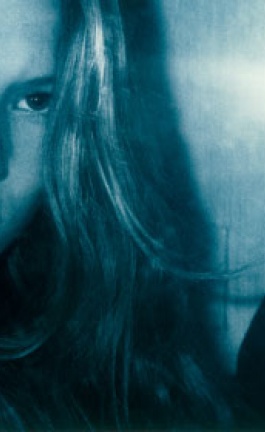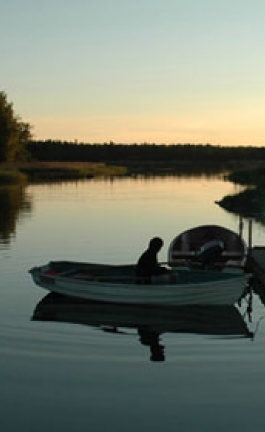photo © Sarah Blee
The Belgian city of Antwerp welcomes its first new museum built in over a century; MAS opened its doors on May 17, 2011 in order to introduce itself to the general public. Along with its premiere it is organizing a live phygital tour (the first world-wide!), a digital live video tour offered by a physical guide at the museum that you get to control online; it is the first of its kind! The idea combines a physical MAS guide and an interactive online visit and aims to encourage people to visit the Antwerp MAS in person. Anyone, anywhere in the world can take the live tour of the museum with the click of a key from their home page. However, you need to hurry because the online phygital tour will run until June 5, 2011. LiveTour site/app designed by Prophets
Image Courtesy of MAS Museum
Image Courtesy of MAS Museum
"The guide hears your commands through headphones and walks you through the museum with a camera. Your computer shows the video images the guide is capturing for you, allowing you to admire the collections, discover the building and enjoy the Antwerp panorama remotely."
Image Courtesy of MAS Museum
With the desire to obtain a museum building that would amaze, impress, surprise and seduce the visitor equally, the ever-imposing sandstone and glass tower designed by Dutch architects Neutelings Riedijk certainly meets these needs. Built on the city's once-abandoned old docks, MAS (Dutch: Museum aan de Stroom // Museum on the River) brings together various public and private collections and exhibits precious artifacts from around the world. The checkered, rusty red skin sixty-two meter high tower has already become an icon and symbol of pride for this new dazzling city district. photo © Filip Dujardin
photo © Filip Dujardin
The concept behind the architectural design scheme of the MAS tower is to emphasize the heaviness of the city’s history, full of historical objects that are the legacy of our ancestors. This was mainly accomplished architecturally by ten gigantic natural stone trunks that are piled up as a physical demonstration of this heaviness; acting as a warehouse of piled history in the middle of the old harbor docks. Every storey of the tower has been rotated a quarter turn, creating a gigantic spiral staircase. This spiral space, in which a facade of corrugated glass is inserted, forms a public city gallery. The spiral route leading up to the top of the tower narrates a story about the harbor and its inhabitants; it is finished with a gigantic curtain of corrugated glass. Thus it allows visitors to enter a museum hall on every level and reflect on the history of the ‘dead city’, while on the way up mind-blowing views unfold above the active city. Level nine on the top of the tower accommodates a restaurant, a party room and a panoramic terrace. photo © Sarah Blee
To evoke the image of a monumental stone sculpture the architects sheltered the facades, floors, walls and ceilings of the tower with large panels of hand-cut Red Indian sandstone from Agra, India (panel size: 100x60 cm). The façade pattern and color variation has been distributed over the façade by a computer-generated pattern. The heavy stone sculpture is counterweighted to the light corrugated glass façade which offers a translucency, and a transparency as opposed to the natural stone which is solid and non-transparent, thus allowing for a play of light and shadow. The corrugated curtain glass is 5.5 meters high and 1.8 meters wide; the sheets are cured into an S shape with a 60cm depth, which stabilizes every glass sheet thus making it self-supporting. In order to alleviate the bold monumental tower volume, Neutelings Riedijk architects affixed a pattern of 3,185 metal ornaments onto the façade as a veil. The hand shaped ornaments pay homage to the symbol of the City of Antwerp; this metal hand shaped pattern continues inside the building by means of metal medallions. photo © Filip Dujardin
photo © Sarah Blee
The ten-storey, sixty-two meter high tower program functions with a central core moving outwards, as the building includes the logistics components such as the lifts and two fire escapes right in the center. The ground floor functions as an entrance hall with the information center, the café STORM (designed by Belgian firm, Not Before Ten) and the departments for logistics, storage and transport. A children’s workshop is located on an intermediate level above the ground floor. Levels two to eight are identical storey’s which can be subdivided completely flexible. The first storey is currently arranged for offices, the second as a depot and storey’s three to eight as exhibit halls. The ninth floor at the top is laid out for a restaurant, a party hall and a commercial kitchen, and a large terrace next to the restaurant has a view on the Scheldt River. café STORM, photo © Sarah Blee

café STORM, photo © Sarah Blee
café STORM, photo © Sarah Blee
The sixty-two meter high MAS tower is supported by a central core of concrete poured on site. Steel frames are suspended from this core; the frames form a balance structure on either side of the core in accordance with the ‘milk maid’ principle. The frames are still partially visible in the exhibition halls as large V components that divide the areas of the halls. The outer walls are suspended from the outer ends of the frames, which in turn support the floor components. The floor components consist of prefabricated concrete TT girders. The typical main sculptural form of the building is created in this way without a single column, as a stack of cantilevered halls. The outer walls of the tower are built out of prefabricated concrete panels. The walls contain 50,000 visible screw plugs that form a decorative pattern in the exhibition halls and can be used as a suspension system. All visible concrete is finished with a fabric coating tinted with a yellowish pigment, which makes the concrete look somewhat weathered.
photo © Sarah Blee
The MAS at night
The building’s program is designed as an adaptable museum environment which can be used and arranged in many ways on the basis of the changing visions of curators, scenographers and concession holders. The interior is carefully studied and we have to admit that it is equally stunning as the exterior architectural design which beautifully reflects itself to the body of water. The oak wood flooring, the prefab concrete walls, and the large steel V component frames add to the interior scheme. Overall, MAS Museum’s new building is a success; the Antwerp government commissioned an icon and they got it! We only hope that this tower will preserve, and create history as Hansahuis or Oosterhuis did; the building which stood in the exact same plot and was the economic seat and warehouse of the Hansa towns in Antwerp built in 1568. It was one of the most important buildings in the city for three centuries, until it burned down in 1893. photo © Filip Dujardin

PROJECT CREDITS
Program: New Development | Museum for City History Antwerp; Museum, Restaurant, Party Room, Pavilions, Plaza
Surface area: 20.000 square meters floor surface, 11.500 square meters outdoor construction
Construction costs: € 33.409.000 (including construction of the pavilions and plaza, excluding design, scenography, VAT, fees and indexing)
Location: Hanzestedenplaats | 2000 Antwerp | Belgium
Principal: City of Antwerp in cooperation with AG Vespa
Design: International Competition | 1st Prize | April 2000
Start construction: October 2006
Realization: February 2010
DESIGN TEAM
Architectural design: Neutelings Riedijk Architects | Rotterdam | The Netherlands
Structural design: Bureau Bouwtechniek | Antwerp | Belgium
Constructive design: ABT België | Antwerp | Belgium
Building physics: Peutz bv ingenieuze adviseurs | Mook | The Netherlands
Installation design: Marcq & Roba | Brussels | Belgium
Fire safety: IFSET International Fire Safety Engineering Technology½Asse | Belgium
ART INTEGRATION
Medallions: Tom Lanoye (text) and Tom Hautekiet (design) | Berchem | Belgium
Plaza mosaic: Luc Tuymans | Antwerp | Belgium
GENERAL CONTRACTOR: THV MAS | Antwerp (Interbuild, Willemen, Cordeel)
PHOTO CREDITS
Photography building: Sarah Blee, Scagliola/Brakkee, Filip Dujardin
Photorgaphy/scenography: Jeroen Verrecht
Copyrights photography: Neutelings Riedijk Architects and City of Antwerp
photo © Scagliola/Brakkee
scenography, photo © Jeroen Verrecht
scenography, photo © Jeroen Verrecht
scenography, photo © Jeroen Verrecht
photo © Sarah Blee














